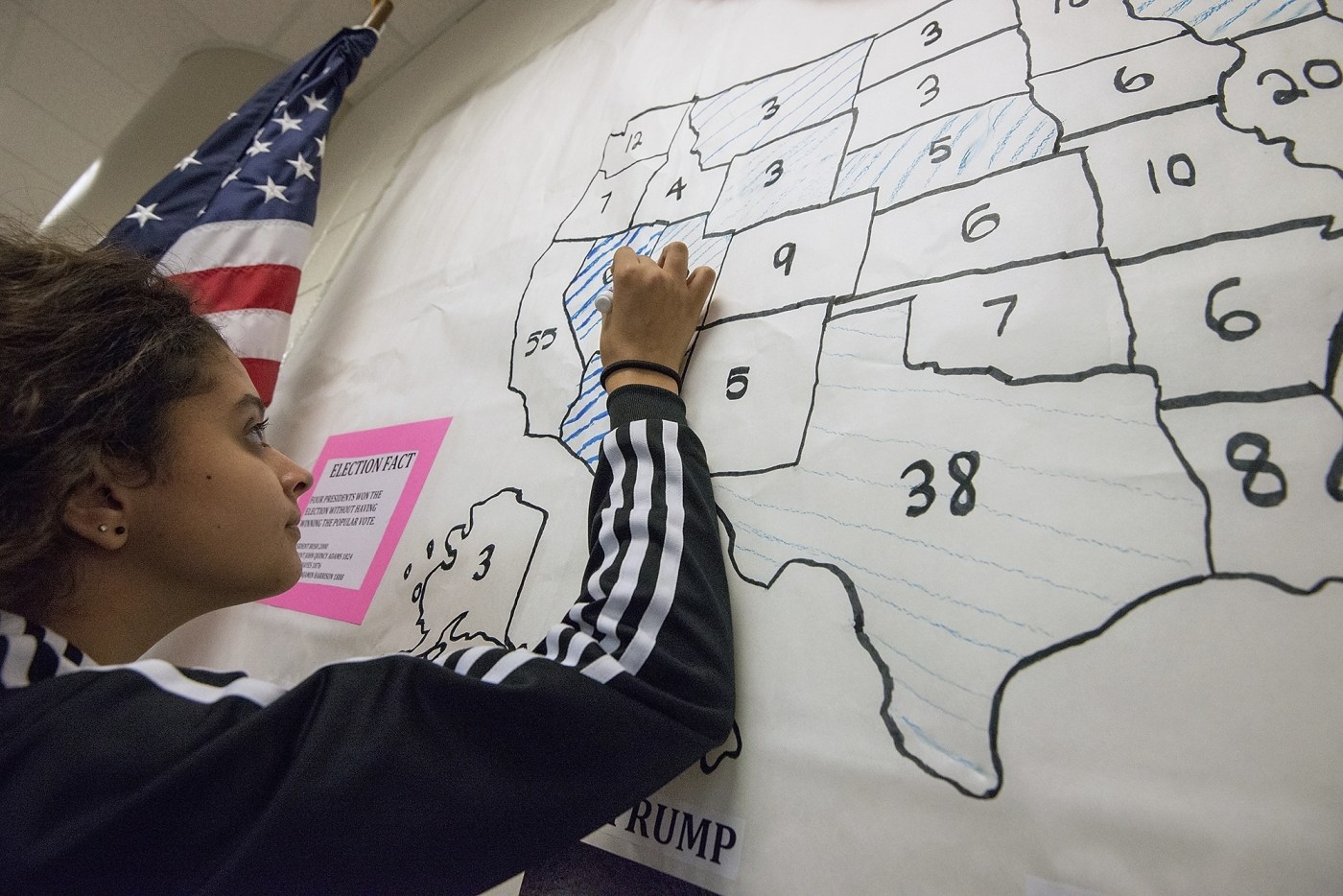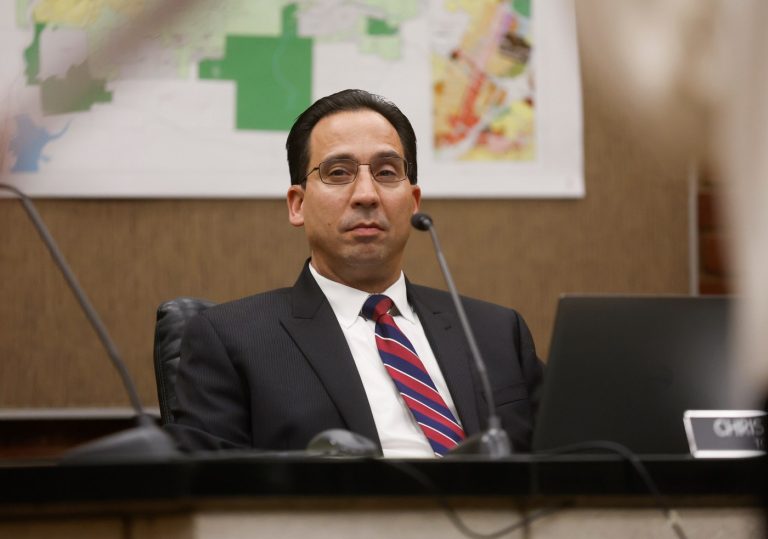By MARY CLARE JALONICK
WASHINGTON (AP) — Donald Trump won the presidency in 2016 because of the Electoral College. So did George W. Bush in 2000.
The Electoral College is the unique American system of electing presidents. It is different from the popular vote, and it has an outsize impact on how candidates run and win campaigns. Republicans Trump and Bush lost the popular vote during their presidential runs but won the Electoral College to claim the nation’s top office.
FILE – Vice President Mike Pence and Speaker of the House Nancy Pelosi, D-Calif., officiate as a joint session of the House and Senate convenes to count the Electoral College votes cast in the presidential election, at the Capitol in Washington, Jan. 6, 2021. (AP Photo/J. Scott Applewhite, File)
Some Democrats charge that the system favors Republicans and they would rather the United States elect presidents by a simple majority vote. But the country’s framers set up the system in the Constitution, and it would require a constitutional amendment to change.
A look at the Electoral College and how it works, as Trump and Vice President Kamala Harris, the Democratic nominee for president, compete for the White House on Election Day, Nov. 5:
What is the Electoral College?
The Electoral College is a 538-member body that elects a president. The framers of the Constitution set it up to give more power to the states and as a compromise to avoid having Congress decide the winner.
FILE – Staff members hold the certification of Electoral College votes from Tennessee during a joint session of the House and Senate to confirm Electoral College votes at the Capitol, early Jan 7, 2021, in Washington. (AP Photo/Andrew Harnik, File)
Each state’s electors vote for the candidate who won the popular vote in that state. The runner-up gets nothing — except in Nebraska and Maine where elector votes are awarded based on congressional district and statewide results.
To win the presidency, a candidate must secure 270 electoral votes — a majority of the 538 possible votes.
How is it different from the popular vote?
It also affects how candidates campaign. Because the outcome is almost certain in solidly Republican states and solidly Democratic states, candidates tend to focus most of their efforts on a handful of swing states that have split their votes in recent elections.
Who are the electors?
Electors are allocated based on how many representatives a state has in the House of Representatives, plus its two senators. The District of Columbia gets three, despite the fact that the home to Congress has no vote in Congress.
It varies by state, but often the electors are picked by state parties. Members of Congress cannot serve as electors.
How and when are the votes counted?
After state election officials certify their elections, electors meet in their individual states — never as one body — to certify the election. This year, that will happen on Dec. 17.
FILE – Senate pages carry boxes containing Electoral College votes into a joint session of the House and Senate convenes to count the electoral votes cast in November’s election, at the Capitol, Wednesday, Jan 6, 2021. (AP Photo/Andrew Harnik, File)
If the two candidates have a tied number of votes, the election is thrown to the House, where each state’s congressional delegation gets one vote. That has happened only twice, in 1801 and 1825.
Once a state’s electors have certified the vote, they send a certificate to Congress. Congress then formally counts and certifies the vote at a special session on Jan. 6. The vice president presides as the envelopes for each state are opened and verified.
Can lawmakers object?
Lawmakers can object to a state’s results during the congressional certification, as several Republicans did after the 2020 election. On Jan. 6, 2021, the House and Senate both voted to reject GOP objections to the Arizona and Pennsylvania results.
FILE – The certification of Electoral College votes for the state of Arizona is unsealed during a joint session of the House and Senate convenes to confirm the electoral votes cast in November’s election, at the Capitol, Jan 6, 2021. (AP Photo/Andrew Harnik, File)
After Trump tried to overturn his defeat to Democrat Joe Biden and his supporters stormed the Capitol on Jan. 6, Congress updated the 1800s-era Electoral Count Act to make it harder to object and to more clearly lay out the vice president’s ceremonial role, among other changes. Trump had pressured Vice President Mike Pence to try and object to the results — something the vice president has no legal standing to do.
Once Congress certifies the vote, the new or returning president will be inaugurated Jan. 20 on the steps of the Capitol.
Read more about how U.S. elections work at Explaining Election 2024, a series from The Associated Press aimed at helping make sense of the American democracy. The AP receives support from several private foundations to enhance its explanatory coverage of elections and democracy. See more about AP’s democracy initiative here. The AP is solely responsible for all content.












